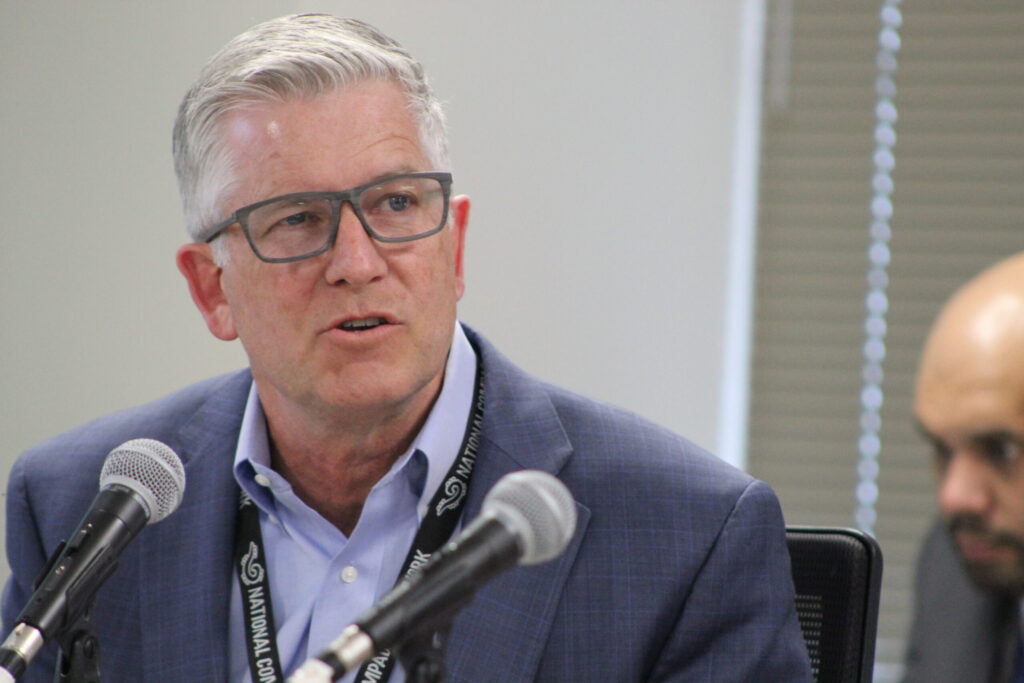Time for state public ed to learn lessons from CMAS failures | NOONAN

Paula Noonan
Politics, not data, have dominated education policy during the last decade. Little good comes from that method of decision-making.
The political fads legislated into education “solutions” are standardized testing to determine who is a good teacher (2010), and charter school/school choice options that claim to offer the “best schools” to minority students. The ostensible mission of these faddish options is to reduce or eliminate achievement gaps between White students and Black, Hispanic, and Free/Reduced Lunch (FRL) students in ELA (reading and writing) and math.
Since its 2015 introduction, the Colorado Measures of Academic Success (CMAS) tests have delivered student scores in the fall after the school year in which testing took place. Each year, there has been consternation expressed toward our public schools for their achievement “failures.”
Stay up to speed: Sign up for daily opinion in your inbox Monday-Friday
Republicans and Democrats for Education Reform pitched the message that union-protected bad teachers were the principal cause of achievement gaps. Charter schools that hired non-union if uncertified teachers were the solution. The CMAS tests would prove that assertion and hold public school teachers and schools “accountable” for results.
This year, when CMAS test resultsfinally arrived, very little commentary occurred. After a decade of CMAS testing and two decades of charter schools offering their highly-advertised, under-delivered “quality choices,” the needles in ELA and math achievement for third-through-fifth grade minority students haven’t moved. There continues to be about a 30-point gap between White students and Black, Hispanic and FRL students across grades and subjects.
An important point with these numbers is the achievement gap for Black and Hispanic students matches the achievement gap for FRL students. That is, the relationship between many children in minority status with low-income is tight. Poverty is a common denominator that yokes and prevents too many students from reaching their learning potential.
Even so, in previous legislative years when educators and supporters of public education have expressed their frustration over standardized testing and charter school initiatives, a combined majority of Republicans and Democrats have shut down efforts to change. Charter schools have been given every advantage in finances and operations while traditional public schools struggle for resources.
CMAS tests continue at 30% of public school teacher evaluation even though experts in statistics and human resource management state a one-time, once-a-year test cannot sus out teacher effectiveness. It is ironic charter schools that proclaim accountability and transparency usually opt out of the state’s required teacher evaluation program.
In reflection, isn’t it ridiculous to believe standardized tests will deliver the academic turnaround for low-income children we seek? Isn’t it fantasy to believe charter schools, many of which educate mostly White students and non-FRL students, would somehow lift all boats when too often minority students aren’t in those charter boats?
After a decade of CMAS testing, parents and students are making a different kind of choice than school choice advocates want. Parents and students are choosing not to take the CMAS tests. Even school districts are making that choice. Brush and Revere school districts have 0 participants in CMAS testing. Cherry Creek Schools has a 78% participation rate and Douglas County, home to the school choice movement, is at 87%. Our state and federal governments require a 95% CMAS participation rate which, at this point, most school districts do not meet.
This test-rejecting trend is predictable. The youngest students, third graders, have the highest percentage of test takers across districts, although the numbers have declined from 2019 to 2024 from 96.3% to 92.3%. Third-grader parents generally have the least experience with CMAS and want to be compliant with state and district policy.
But by seventh grade between 2019 and 2024, open rebellion has occurred. Participation among this cohort in 2019 was at a highish 88.8%, even though the requirement is 95%. By 2024, the seventh grade participation rate dropped to 78.5 in ELA and 79.2 in math.
The 2024 CMAS test scores prove we must change the plot line of public education policy in the state. It is past time to admit neither standardized tests nor school choice with charter schools will fix the achievement gap between White students and the groups of children in FRL status. Vouchers will only worsen the situation.
Experience is the hardest teacher because she gives the test first and the learning after, said Oscar Wilde. It is time for the state to take lessons from our experience. If we consider what middle-class and wealthy kids have that poor kids do not, we can piece together the environment in which kids have the best opportunities to learn.
Middle-class and wealthy kids have homes and a bed. They eat three meals a day, or at least could if they were offered. They have clothes that fit and are appropriate for the weather, even if the boys always wear shorts when it is snowing. They have technology at their fingertips. They have health care, dental care and eye care. When they get sick, they can stay home.
We have wasted a decade on our current practices and undelivered promises. Let us not waste another.
Paula Noonan owns Colorado Capitol Watch, the state’s premier legislature tracking platform.











